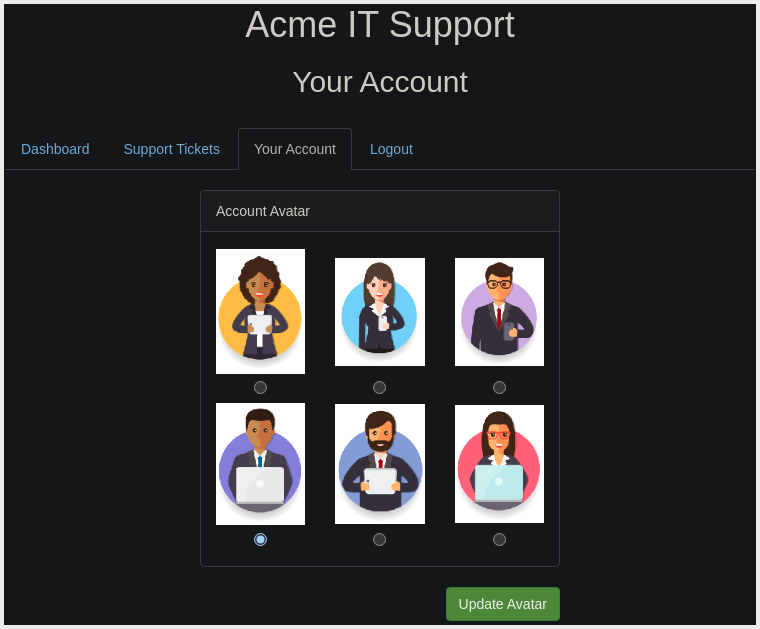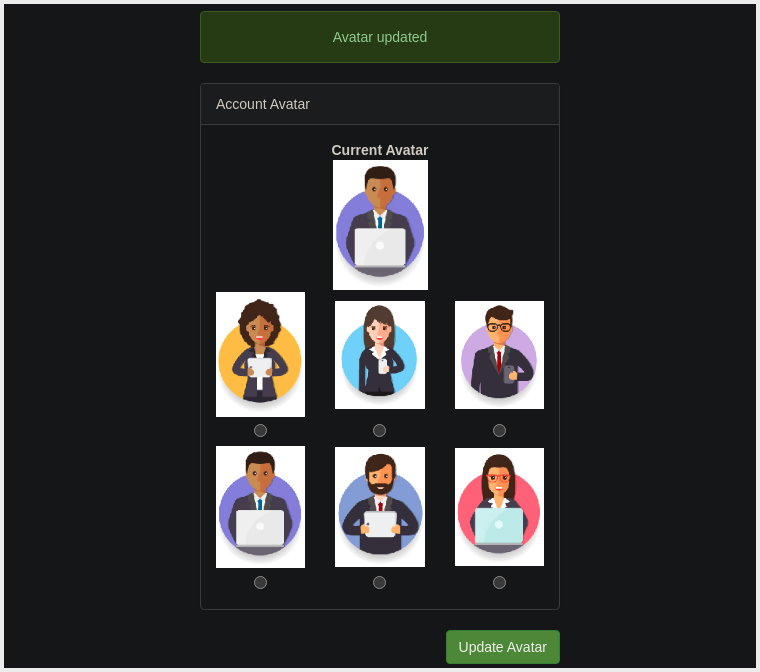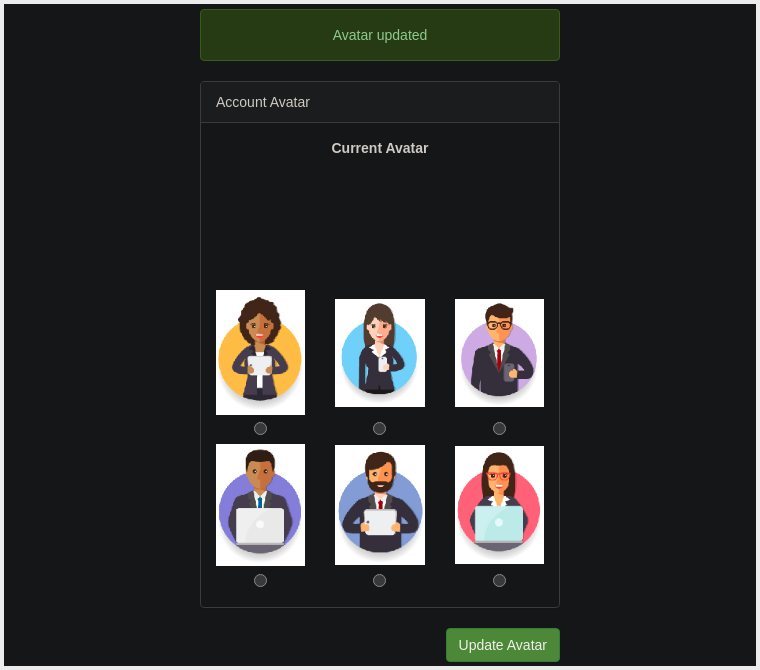Server-Side Request Forgery
We found two Endpoints during a content discovery exercise against the Acme IT Support Website. The first one is /private, which gives us an error message explaining that the contents Cannot be Viewed from our IP Address.
The second is a new version of the customer account page at /customers/new-account-page with a new feature allowing customers to choose an Avatar for their Account.
- Creating an Account and Going to the Avatar Selection Page:
- Avatar Page:
https://website.com/customers/new-account-page - Viewing the Page Source of the
Avatar Form, we see the Avatar form field value contains the Path to the Image.
- Avatar Page:

<div class="col-xs-4">
<div class="avatar-image" style="background-image: url('/assets/avatars/1.png')"></div>
<input type="radio" name="avatar" value="assets/avatars/1.png">
</div>
- Changing The Avatar:
- If we choose one of the Avatars and then click the Update Avatar Button, we see the form change and, above it, display our Currently Selected Avatar. Viewing the Page Source will show our Current Avatar is displayed using the data URI Scheme, and the image content is
BASE64Encoded.
- If we choose one of the Avatars and then click the Update Avatar Button, we see the form change and, above it, display our Currently Selected Avatar. Viewing the Page Source will show our Current Avatar is displayed using the data URI Scheme, and the image content is

<div class="col-xs-6 col-xs-offset-3">
<div><strong>Current Avatar</strong></div>
<div class="avatar-image" style="background-image: url(data:image/png;base64,iVBORw0KGgoAAAANSUhEUgAAAHIAAACcCAYAAA==)"></div>
</div>
- Changing The Avatar Value to Private:
- We want the Server to access the Resource and get past the IP Address Block.
- Selecting an Avatar - Select Inspect on the Button
- The web application has a Deny List in place and has Blocked Access to the
/privateEndpoint.

<div class="col-xs-4">
<div class="avatar-image" style="background-image: url('/assets/avatars/6.png')"></div>
<input type="radio" name="avatar" value="private">
</div>
- Directory Traversal:
- Endpoint:
x/../private
- Endpoint:

<div class="col-xs-4">
<div class="avatar-image" style="background-image: url('/assets/avatars/6.png')"></div>
<input type="radio" name="avatar" value="x/../private">
</div>
We have now Bypassed the Restriction, and the user Updated the Avatar. This works because when the Web Server receives the Request for x/../private it knows that the ../ string means to Move Up a Directory that now translates the Request to just /private.